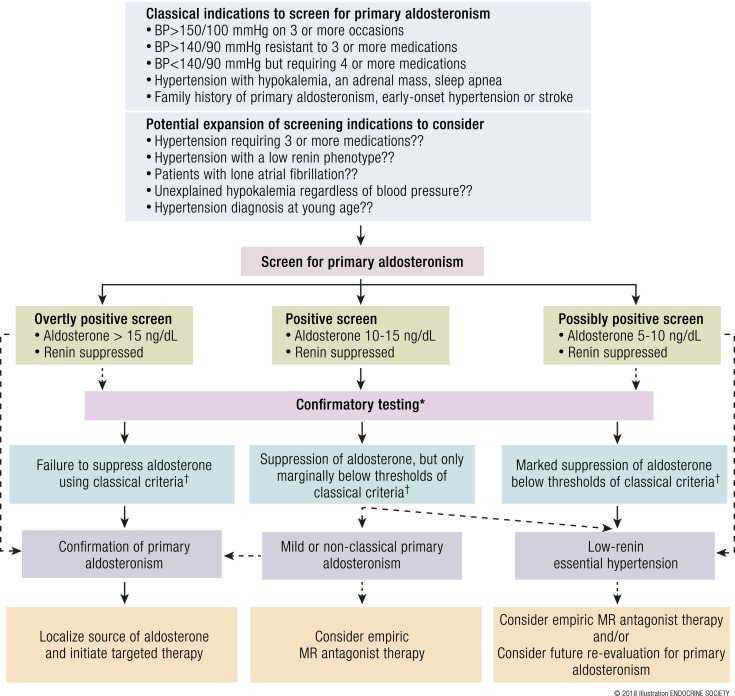Figure 5.
Proposed modifications to the diagnostic approach to detect overt and milder forms of primary aldosteronism. Biochemical screening for primary aldosteronism is generally pursued when classical indications are observed, as recommended by the Endocrine Society (97). Consideration of expanded screening indications may increase the probability of detecting more cases of primary aldosteronism. A positive screen for primary aldosteronism should suggest renin-independent aldosterone secretion, whereby aldosterone levels are relatively high in the context of a suppressed renin. In the absence of overt evidence for renin-independent aldosteronism on screening, confirmatory testing can be used to affirm the diagnosis (Table 3) (97). Failure or relative failure to suppress aldosterone on dynamic testing may confirm the diagnosis, whereas marked suppression of aldosterone may instead suggest a diagnosis of low-renin hypertension. The diagnosis of primary aldosteronism need not rely on binary thresholds, rather it may exist across a continuum of severity whereby mild and nonclassical cases may be detected as well. Solid arrows indicate recommended decision pathways; dashed arrows indicate the authors’ proposals to consider in the appropriate clinical context. BP, blood pressure. [© 2018 Illustration ENDOCRINE SOCIETY]

